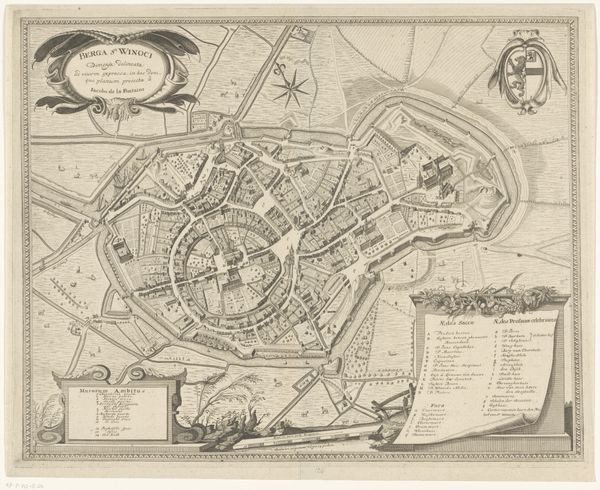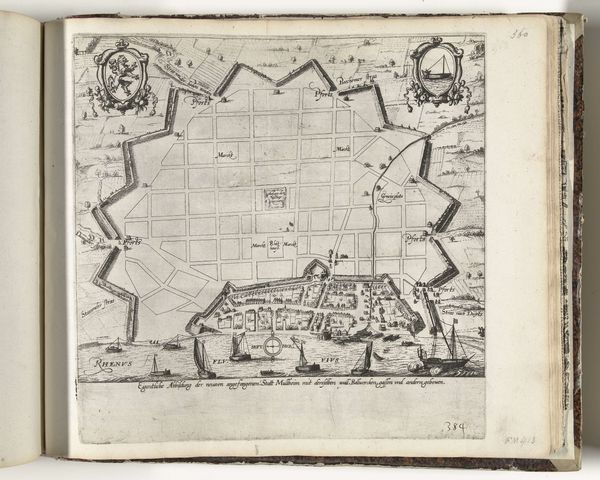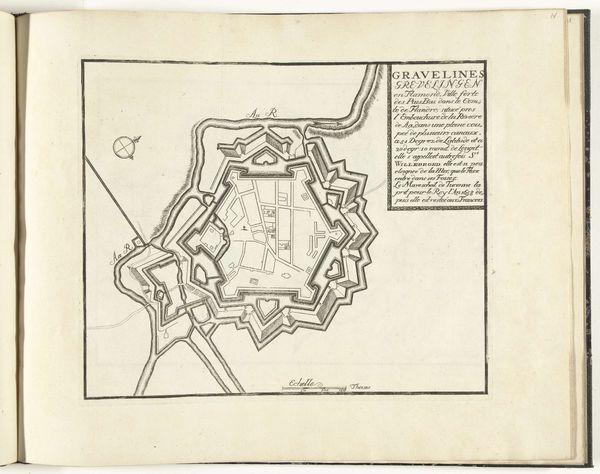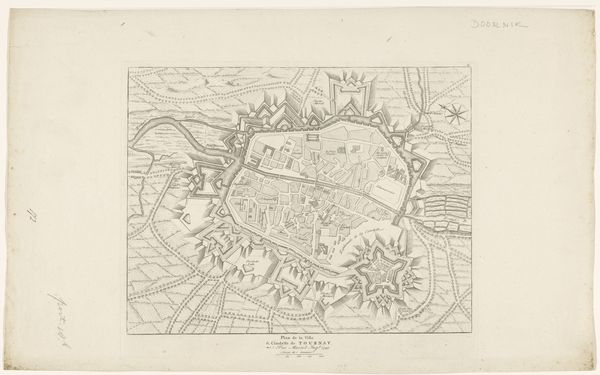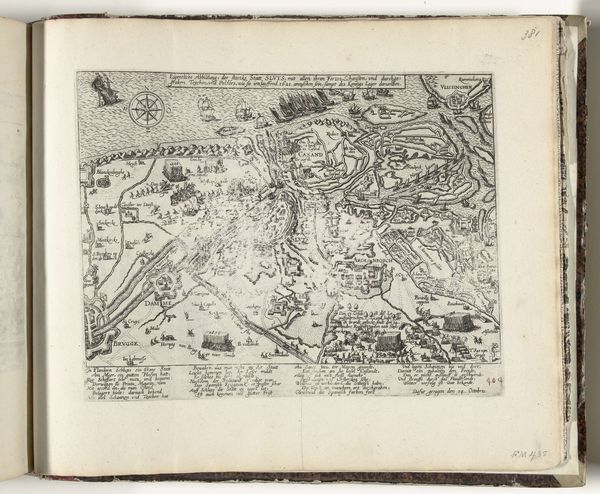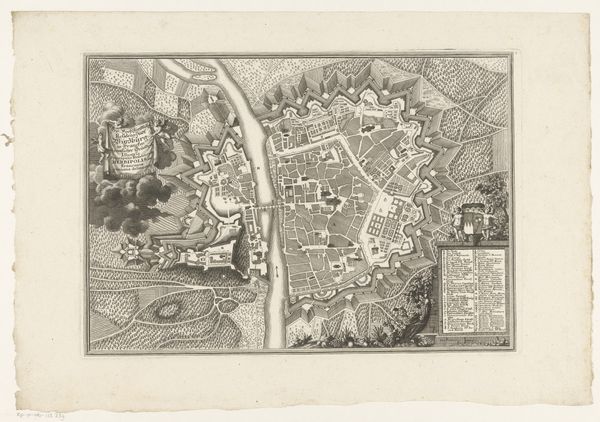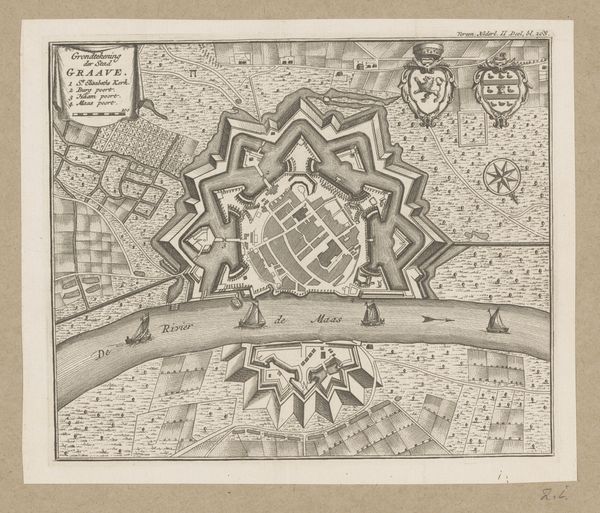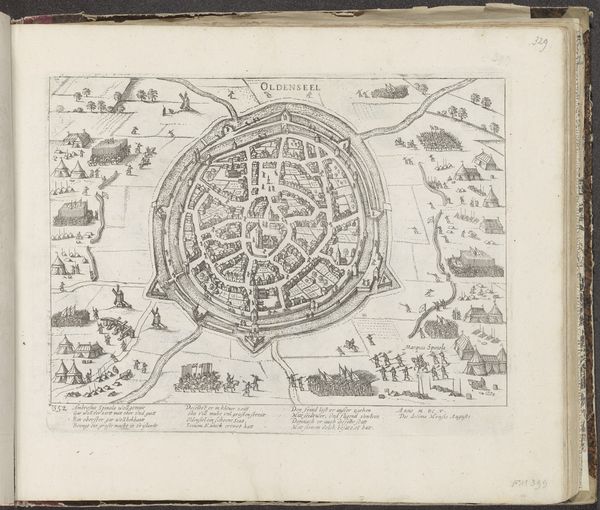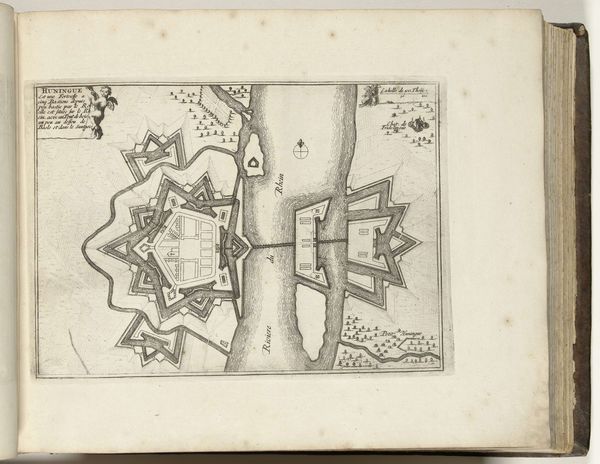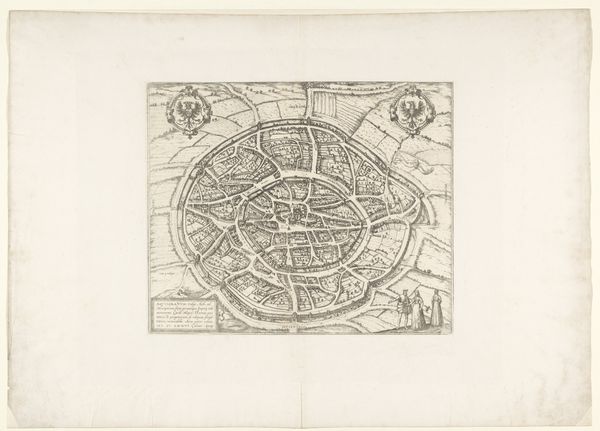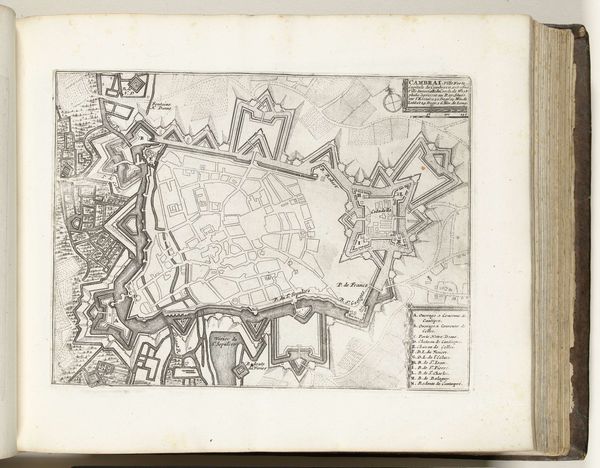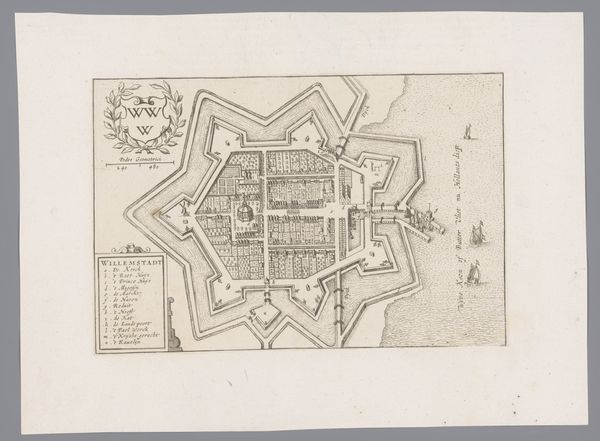
drawing, ink, engraving
#
drawing
#
pen sketch
#
ink
#
geometric
#
cityscape
#
engraving
Dimensions: height 495 mm, width 575 mm
Copyright: Rijks Museum: Open Domain
Curator: What a beautifully rendered city! This is an engraving from 1733, titled "Plattegrond van Milaan," which translates to "Map of Milan," attributed to an anonymous artist and currently held in the Rijksmuseum. The primary materials are ink and engraving. Editor: The detail is just astounding. Look at the fineness of the lines, it evokes a real sense of place, though almost too orderly for how I imagine the lived reality. It's all so meticulously planned. Curator: Indeed. Consider the labor involved in creating something like this, a product both artistic and utilitarian. The printing process itself—etching the design into a plate, applying ink, and pressing it onto paper—would have required significant skill. Think also of the paper's production, where does it originate? Editor: And this map certainly served a social and political function, it wasn’t just decorative. A plan like this would’ve been critical for civic administration, urban planning, and likely military strategy. I imagine the political elite of the city poring over it, using it to control and understand their domain. Notice the walled fortification! Curator: Precisely. The image reinforces power dynamics through the very act of representation. Furthermore, let’s acknowledge its value as a commodity, a tradable object reflecting the wealth and standing of Milan during this era. Its aesthetic qualities were always inextricably intertwined with economics and social capital. The ink's composition, even! Editor: It makes you wonder how widely circulated this image was. Would ordinary citizens have ever laid eyes on it? Or was its access strictly limited to governing bodies, architects and landowners. That would dramatically shift how we consider its public impact and its contribution to Milanese identity. Curator: Ultimately, even in its two-dimensional form, it serves as a reminder of the processes of construction and production that go into creating a built environment, from the design phase all the way to printing, distribution and application. Editor: Looking closely, it’s a powerful testament to the aspirations of a city and, crucially, an index of who holds power in the public sphere.
Comments
No comments
Be the first to comment and join the conversation on the ultimate creative platform.


